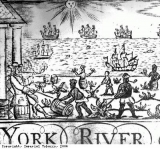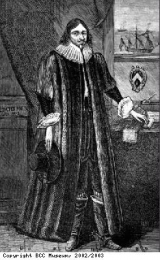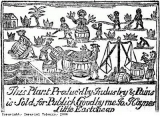Plantation owners
The Caribbean islands were colonised by the Europeans in the 1400s, after explorers such as Christopher Columbus arrived there. Although inhabited by the local Amerindians , the Europeans soon took over the islands when they realised how fertile the land was. Products such as sugar and tobacco were seen as luxuries in Europe and grew well in the Caribbean climate. The settlers established plantations and grew ‘cash’ crops of sugar, tobacco, coffee, spices and cotton for sale back in Europe. Cash crops were so called because they were grown in large quantities just for sale, rather than for local use. The growth of plantations in the Caribbean and southern America became big business by the end of the 1600s. As sugar became the most profitable crop, owners of large plantations edged out smaller farmers. The need for workers soon increased to keep up with the demand for sugar. So the native peoples of the Caribbean islands, Amerindians, were made to work on the plantations there. They were used to hunting and gathering food, rather than hard agricultural work, which took its toll on them. Many Amerindians resisted colonisation, but the vast majority died from a combination of illness (after being exposed to European diseases) and brutal treatment.
The plantations needed more labour than the surviving Amerindians could provide. By the 1600s, European workers were tried as a source of plantation labour for the British colonies. ‘Indentured servants’, political prisoners (both Irish and English) and common criminals were brought in to add to the labour supply. Indentured servants were people who had agreed to work for a given number of years, selling their labour in return for travel costs, food and lodging. They were usually promised a cash bonus or given land at the end of their contract. However, there were not enough indentured servants to work on the Caribbean plantations. The political prisoners and criminals were difficult to obtain in large enough numbers and often hard to discipline. Slave ship captains were even known to kidnap children from Britain and take them to work on the plantations. As the increased production and demand for sugar gained pace, more workers were required. Africans had been used as workers on Spanish and Portugese islands like Madeira in the Atlantic Ocean. They were valued as agricultural workers. Gradually, more and more enslaved peoples from Africa were captured, sold, and brought across the Atlantic Ocean to work on the plantations. Africans were well equipped to deal with the hot climate, had developed immunities to European diseases and were used to agricultural work. This image from a tobacco wrapper shows white workers (indentured servants) and enslaved Africans working together on an American tobacco plantation.





